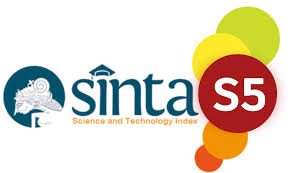Appraisals Analysis on the Argumentation Structure of Indonesian Undergraduate Students’ Research Articles
DOI:
https://doi.org/10.37253/iallteach.v4i1.6711Keywords:
Argumentation Structure, Appraisal Analysis, Undergraduate Students’Abstract
This research aims to analyze the argument structure of undergraduate students’ research articles that focus on the introduction section. The data collection was conducted by analyzing the proceedings in the "Background" section written by undergraduate students at university in Indonesia. The data were then analyzed by using a corpus. This research found type of argument of this study were proclaim, disclaim, entertain, and attribute. The lexical choice that was used proclaim with a total of 46. The lexemes entertain a total of 37. The next lexical choice that was used is disclaim with a total of 33. Finally, attribute a total of 26 as the lowest engagement in appraisal.
Downloads
Download data is not yet available.
References
Afshar, H. S., Movassagh, H., & Arbabi, H. R.
(2017). The interrelationship among critical thinking, writing an argumentative essay in an L2 and their subskills. The Language Learning Journal, 45(4), 419-433. DOI: HYPERLINK "https://doi.org/10.1080/09571736.2017.1320420" https://doi.org/10.1080/09571736.2017.1320420
Brezina, V., & Gablasova, D. (2018). The
Corpus Method. DOI:10.1057/978-1-137-57185-4_40
Dash, N. S., & Ramamoorthy, L. (2019). Utility
and Application of Language Corpora. Springer, Singapore. DOI https://doi.org/10.1007/978-981-13-1801-6
Erduran, S., Simon, S., & Osborne, J. (2004).
TAPping into argumentation: Developments in the application of Toulmin's argument pattern for studying science discourse. Science education, 88(6), 915-933. https://doi.org/10.1002/sce.20012
He, Q. (2019). A corpus-based approach to
clause combining in English from the systemic Functional perspective. Springer. https://link.springer.com/book/10.1007/978-981-13-7391-6
Henkemans, F. S. (2000). State-of-the-Art: The
Structure of Argumentation. Argumentation, 14(4), 447–473. DOI: https://doi.org/10.1023/A:1007800305762
Irawati, L., Saukah, A., & Suharmanto.
Indonesian authors writing their discussion sections both in English and Indonesian research articles. Cakrawala Pendidikan, 37(3), 447-456. DOI: 10.21831/cp.v38i3.21536
Liu, X. (2017). Evaluation in Chinese University
EFL Students’ English Argumentative Writing: An APPRAISAL Study. Electronic Journal of Foreign Language Teaching, 10(1), 40-53. HYPERLINK "https://e-flt.nus.edu.sg/wp-content/uploads/2020/09/v10n12013/liu.pdf" https://e-flt.nus.edu.sg/wp-content/uploads/2020/09/v10n12013/liu.pdf
Lubis, A. H. (2019). The argumentation
structure of research article ‘findings and discussion’ sections written by Non-native English speaker novice writers: A case of Indonesian undergraduate students. Asian Englishes, 22(2), 143-162. DOI: HYPERLINK "https://doi.org/10.1080/13488678.2019.1669300" https://doi.org/10.1080/13488678.2019.1669300
Martin, J. R., & White, P. R. R. (2005). The
Language of Evaluation: Appraisal in English. PALGRAVE MACMILLAN. DOI 10.1057/9780230511910
Palau, R. M., & Moens, M. F. (2009).
Argumentation Mining: The Detection, Classification and Structure of Arguments in Text. Proceedings of the International Conference on Artificial Intelligence and Law (pp. 98-107). DOI: HYPERLINK "https://doi.org/10.1145/1568234.1568246" https://doi.org/10.1145/1568234.1568246
Prakken, H. (2010). An abstract framework for
argumentation with structured arguments. Argument & Computation, 1(2), 93-124. DOI: HYPERLINK "http://dx.doi.org/10.1080/19462160903564592" http://dx.doi.org/10.1080/19462160903564592
Qin, J., & Karabacak, E. (2010). The analysis
of Toulmin elements in Chinese EFL university argumentative writing. System, 38(3), 444-456. https://doi.org/10.1016/j.system.2010.06.012
Qoriah, M. (2020). An Analysis of Visual Social
Semiotics in English Textbook. Edukasi: Jurnal Pendidikan dan Pengajaran, 6-18. DOI: HYPERLINK "https://doi.org/10.19109/ejpp.v6i2.5518" https://doi.org/10.19109/ejpp.v6i2.5518
Rusfandi. (2015). Argument-counterargument
structure in Indonesian EFL learners’ English argumentative essays: A dialogic concept of writing. RELC Journal, 46(2), 181-197. DOI: https://doi.org/10.1177/0033688215587607
Stemler, S. E. (2015). Content analysis.
Emerging trends in the social and behavioral sciences: An Interdisciplinary, Searchable, and Linkable Resource, 1-14. DOI:10.1002/9781118900772.etrds0053
Thongvitit, S., & Thumawongsa, N. (2017). A
Corpus-Based Study of English Collocations
Found in the Abstracts of Research Articles Written by Thai EFL Writers. International
Journal of Social Science and Humanity, 7, 12. DOI:10.18178/ijssh.2017.7.12.920
Toulmin, S., 2003. The Uses of Argument, updated ed. Cambridge University Press, Cambridge.
(2017). The interrelationship among critical thinking, writing an argumentative essay in an L2 and their subskills. The Language Learning Journal, 45(4), 419-433. DOI: HYPERLINK "https://doi.org/10.1080/09571736.2017.1320420" https://doi.org/10.1080/09571736.2017.1320420
Brezina, V., & Gablasova, D. (2018). The
Corpus Method. DOI:10.1057/978-1-137-57185-4_40
Dash, N. S., & Ramamoorthy, L. (2019). Utility
and Application of Language Corpora. Springer, Singapore. DOI https://doi.org/10.1007/978-981-13-1801-6
Erduran, S., Simon, S., & Osborne, J. (2004).
TAPping into argumentation: Developments in the application of Toulmin's argument pattern for studying science discourse. Science education, 88(6), 915-933. https://doi.org/10.1002/sce.20012
He, Q. (2019). A corpus-based approach to
clause combining in English from the systemic Functional perspective. Springer. https://link.springer.com/book/10.1007/978-981-13-7391-6
Henkemans, F. S. (2000). State-of-the-Art: The
Structure of Argumentation. Argumentation, 14(4), 447–473. DOI: https://doi.org/10.1023/A:1007800305762
Irawati, L., Saukah, A., & Suharmanto.
Indonesian authors writing their discussion sections both in English and Indonesian research articles. Cakrawala Pendidikan, 37(3), 447-456. DOI: 10.21831/cp.v38i3.21536
Liu, X. (2017). Evaluation in Chinese University
EFL Students’ English Argumentative Writing: An APPRAISAL Study. Electronic Journal of Foreign Language Teaching, 10(1), 40-53. HYPERLINK "https://e-flt.nus.edu.sg/wp-content/uploads/2020/09/v10n12013/liu.pdf" https://e-flt.nus.edu.sg/wp-content/uploads/2020/09/v10n12013/liu.pdf
Lubis, A. H. (2019). The argumentation
structure of research article ‘findings and discussion’ sections written by Non-native English speaker novice writers: A case of Indonesian undergraduate students. Asian Englishes, 22(2), 143-162. DOI: HYPERLINK "https://doi.org/10.1080/13488678.2019.1669300" https://doi.org/10.1080/13488678.2019.1669300
Martin, J. R., & White, P. R. R. (2005). The
Language of Evaluation: Appraisal in English. PALGRAVE MACMILLAN. DOI 10.1057/9780230511910
Palau, R. M., & Moens, M. F. (2009).
Argumentation Mining: The Detection, Classification and Structure of Arguments in Text. Proceedings of the International Conference on Artificial Intelligence and Law (pp. 98-107). DOI: HYPERLINK "https://doi.org/10.1145/1568234.1568246" https://doi.org/10.1145/1568234.1568246
Prakken, H. (2010). An abstract framework for
argumentation with structured arguments. Argument & Computation, 1(2), 93-124. DOI: HYPERLINK "http://dx.doi.org/10.1080/19462160903564592" http://dx.doi.org/10.1080/19462160903564592
Qin, J., & Karabacak, E. (2010). The analysis
of Toulmin elements in Chinese EFL university argumentative writing. System, 38(3), 444-456. https://doi.org/10.1016/j.system.2010.06.012
Qoriah, M. (2020). An Analysis of Visual Social
Semiotics in English Textbook. Edukasi: Jurnal Pendidikan dan Pengajaran, 6-18. DOI: HYPERLINK "https://doi.org/10.19109/ejpp.v6i2.5518" https://doi.org/10.19109/ejpp.v6i2.5518
Rusfandi. (2015). Argument-counterargument
structure in Indonesian EFL learners’ English argumentative essays: A dialogic concept of writing. RELC Journal, 46(2), 181-197. DOI: https://doi.org/10.1177/0033688215587607
Stemler, S. E. (2015). Content analysis.
Emerging trends in the social and behavioral sciences: An Interdisciplinary, Searchable, and Linkable Resource, 1-14. DOI:10.1002/9781118900772.etrds0053
Thongvitit, S., & Thumawongsa, N. (2017). A
Corpus-Based Study of English Collocations
Found in the Abstracts of Research Articles Written by Thai EFL Writers. International
Journal of Social Science and Humanity, 7, 12. DOI:10.18178/ijssh.2017.7.12.920
Toulmin, S., 2003. The Uses of Argument, updated ed. Cambridge University Press, Cambridge.
Downloads
Published
2022-06-21
Issue
Section
Articles




.png)






